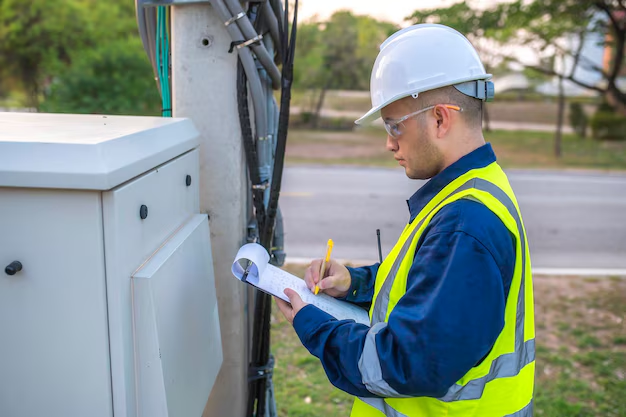How Much Electricity Does Your Refrigerator Really Use?
When thinking about household appliances that consume a lot of energy, the refrigerator often comes to mind. Given that it's one of the few appliances running continuously, it’s natural to assume it might significantly impact your electricity bill. But does your refrigerator actually use a lot of electricity? This article seeks to answer that question by delving into how refrigerators use energy and providing practical advice on making them more efficient.
The Basics of Refrigerator Energy Consumption
Most modern households are equipped with at least one refrigerator, an essential appliance for preserving food. While they are energy-intensive by necessity, improvements in technology have made newer models much more efficient than their predecessors. To understand the energy usage of refrigerators, several factors should be considered:
1. Refrigerator Size and Type
- Size Matters: Larger units inherently use more electricity than smaller ones. For instance, a family-sized fridge with a freezer uses more energy than a compact unit designed for single occupants.
- Design Influence: Side-by-side refrigerators are generally less efficient compared to top or bottom freezer models. This is due to the layout impacting how often cold air escapes when the door is opened.
2. Technology and Model Age
- Older Models: Refrigerators manufactured a decade or more ago can be significantly less efficient. This is because older models lack the advanced insulation and compressor technology found in newer units.
- Energy Star Ratings: Turning to refrigerators with high energy efficiency ratings, like those certified by standards such as Energy Star, can help lower energy consumption substantially.
3. Usage Patterns
- Location and Placement: Placing refrigerators in a location that's too warm or too cramped can force the appliance to work harder to maintain a consistent temperature. Position it away from direct sunlight and other heat-producing appliances.
- Frequent Door Opening: The more frequently the door is opened, the harder the refrigerator works to regulate its internal temperature.
- Proper Maintenance: Regular maintenance, like cleaning the coils and ensuring door seals are tight, helps maintain efficiency.
Understanding Electricity Usage
Electricity usage for your refrigerator is often measured in kilowatt-hours (kWh). The cost of running a refrigerator varies widely based on the factors mentioned above.
Estimating Refrigerator Electricity Costs
- Calculate Energy Use: Start by checking the energy consumption label on your refrigerator. This usually gives an annual energy consumption estimate in kWh.
- Local Electricity Rates: Multiply the energy use by your local electricity rate. This gives a rough estimate of annual operating costs.
- Compare and Analyze: Use this estimate to balance between upfront costs of a newer, more efficient model and long-term savings in energy expenses.
Tips for More Efficient Refrigerator Use 🧊
Improving refrigeration efficiency can lead to reducing electricity usage and associated costs. Here are some practical tips:
- Temperature Settings: Keep the refrigerator at 37-40°F (3-4°C) and the freezer at 0-5°F (-18 to -15°C) to optimize preservation and energy use.
- Stock Up Wisely: A full refrigerator retains cold better than an empty one. If necessary, fill gaps with water containers.
- Defrost Regularly (for manual-defrost models): Ice accumulation can reduce efficiency.
- Upgrade Wisely: Consider investing in a newer model if your current refrigerator is several decades old and lacks energy-efficient features.
- Smart Management: Use smart plugs or timers if you're storing multiple fridges, switching off those that are unused for extended periods.
Practical Summary: Key Tips for Refrigerator Efficiency 🔑
- 📏 Size & Placement: Choose the right size for your needs and place it in an energy-efficient position.
- ✨ Advanced Technology: Opt for newer models with efficient ratings.
- ♻️ Regular Maintenance: Keep coils clean and door seals tight.
- 🌡️ Optimal Settings: Maintain recommended temperature settings for efficiency.
- ❄️ Manage Contents: Keep the fridge moderately full and organize items efficiently.
Additional Considerations
Seasonal Variation
Energy consumption can fluctuate with seasonal temperature changes. For instance, during warmer months, your refrigerator may use more electricity as it works harder to maintain a cool environment amidst higher ambient temperatures.
Household Dynamics
Habit changes can also impact energy use. An extra person in the home means more frequent door openings and potential use of additional refrigerator space, translating to increased usage.
Eco-friendly Innovations
The rise of smart appliances now offers refrigerators that can optimize their energy use through connectivity. They can adjust temperature settings based on usage patterns and even suggest maintenance tasks.
Environmental Impact
Reducing refrigerator electricity consumption aligns with lowering carbon footprints. This environmental benefit, coupled with cost savings, makes energy-efficient practices compelling.
Conclusion: The Balance of Cost and Efficiency
While refrigerators can contribute significantly to household electricity use due to their continuous operation, advancements in technology and practices can markedly reduce this impact. Evaluating your appliance's efficiency, considering replacement of older models, and adopting energy-saving habits will not only lower your electricity bills but also support a more sustainable lifestyle. Keeping these insights in mind helps you make informed decisions about your energy consumption, ensuring that your refrigerator serves as an efficient and essential component of your household.
